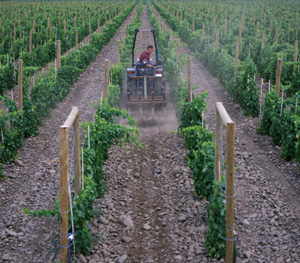In Seattle just over a year ago, the wide-ranging membership of the Washington Wine Quality Alliance, or WWQA, marked its first anniversary by doing something audacious: they doubled the levy applied to each gallon of wine they sell to give the commission more than $1 million a year in revenue to promote their interests.
This year, the annual meeting was held in Richland, in the heart of the state's wine country, where producers and growers gathered to discuss where their wines fit into a global market and to find out just exactly who the competition at the door might be. Like many New World producers (B.C. included), Washington has been focused on what they've seen as "catching up" with France and California when it comes to quality and price, at times to the total exclusion of value.
Many Washington growers and producers have invested heavily in producing merlot and comparing themselves to Bordeaux and its benchmark Right Bank wines of St. Emilion and Pomerol. The California rivalry is even more intense, with just about everyone coveting the success of producers there, especially at the premium end of the market. Those goals are admirable, to say the least -- or they would be if California and Bordeaux were really the competition. But they are not.
It was suggested that WWQA members look north to what's selling in B.C. for a glimpse of the future, to find out who their real competitors may be. In B.C., sales of French wines have fallen from 50 per cent of the total market to around 10 per cent in little more than a decade. California's sales here are stagnant at best, despite the quality of its wines, because the products are widely perceived by consumers to be over-priced.
When it was suggested to WWQA members that Chilean merlot may be more of a threat in both the Washington and B.C. markets because it can be both delicious and inexpensive, most of the WWQA members looked puzzled. It was almost as if they were thinking: "Chile? Don't they make cheap wine in Chile?" Yes, they do. But they make good-value wine, too.
Another subject was syrah. Washington is currently experiencing a big syrah push. Figures regarding acreage planted and labels produced are way up and the numbers are increasing with each vintage. The problem is no one is making or talking about $10 to $12 syrah -- it's all premium, it's all expensive.
On that score, the competition is Australia, along with some impressive new labels from Chile and Argentina, although most WWQA members seemed unaware or at least unwilling to accept that such inexpensive labels could be described as real competition. The lesson they have to learn is that quality, like beauty, is in the eye of the beholder, or on the palate of the drinker. While every region needs to compare its wines to the best in the world from time to time, there is nothing wrong with making the best $12 syrah in the market. As is the case with many B.C. labels, Washington has priced many products to impress the buyer as opposed to the consumer, even though, as far as I can see, most wine drinkers simply want something affordable to sip at home.
Over lunch, the question of price came up at my table of mostly grape growers. They were asked if they could make a serious wine in Washington for $10 to $12. Most said it was possible, but they would have to raise the yield (the number of grape clusters per vine) and generally spend less money in the vineyard. I asked: Why don't they? Because wineries tend to demand the highest quality grapes to make the highest quality wine to establish their image, and they don't seem to care that the consequences (higher prices) are passed on to consumers.
Of course the reality is that consumers just want a soft, round, delicious-drinking wine for $10. Which is why Australia, Chile and Argentina are the real competition for dollars in both Seattle and Vancouver, not the wines of Bordeaux and California.
Tough-love day continued for the WWQA members, courtesy of a small panel of Washington retail wine shop owners assembled to tell it like it is in the everyday selling environment. "Get a distributor" was a frequent cry, because wineries that sell direct to the retailer are simply unable to supply it in an efficient and timely manner. With privatization looming in B.C., wineries here should take note that most retailers do not want to deal with them -- it's simply inefficient. "We don't need another $40 wine from an unknown local producer" was another theme, as was the plea to develop a realistic retail business plan before making the first batch of wine.
Finally, the retailers urged the WWQA members to learn something about the sellers' side of the business before trying to tell store owners how much they need the wineries' products.
The day finished with a global tasting featuring merlot from everywhere but Washington -- in essence, tasting the competition we had been hearing about all day. Some WWQA members were disappointed with the wines, saying Washington merlot was much better. Others begrudgingly picked a winner or two, but generally agreed the wines didn't measure up to the quality of home-grown merlot. But in fact, each merlot that was tasted sells more bottles in B.C. than does the entire Washington merlot category combined.
It was then that the light went on: It isn't just about quality, it's about value, and about an integrated process that delivers the right wines to the right market at the right price. In Washington, WWQA members may already be thinking about changing their ways. By the way, WWQA membership is open to all growers in the state for a mere $100 per year. Now that's value.

 quicksearch
quicksearch






